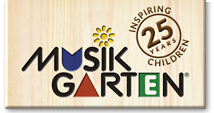Improvisation is a skill we piano teachers need to develop. When we teach our students to improvise, we know they gain a greater understanding of the language of music. Sylvia Rabinof, my improvisation instructor at the Juilliard School wrote, “It is a tool to building effective musicianship. Together with ensemble training, the study of improvisation is perhaps the most undervalued and misunderstood phase of music education today. We tend to forget that improvisation is a basic element of music making and that one who can improvise successfully uses all of the various idioms and skills of that language as naturally as if speaking in his native tongue. The entire musical literature, which its tremendous diversity of expressive styles, has evolved from improvisatory traditions; all of this predated systems of notation. Improvised music, then, no matter how primitive or limit, carries on a unique artistic heritage.”
But for the majority of piano teachers, the art of improvisation was not included in their own weekly piano lesson. As a result, many teachers feel awkward when it is their turn to create an improvisatory phrase in front of their students. Can we, the teacher, still develop our improvisational skills?
I believe the best answer is to teach The Musikgarten curriculum, Music Makers at the Keyboard, a three year sequential program for group piano. This method has the best improvisation sequence I have found. It teaches improvisation step by step and I recommend you, the teacher, follow this program to develop their own improvisational skills. If you work alongside (or a bit ahead of) your students and master each step of the process you will find this process of creating music gradually becoming easier for you. If you haven’t yet started a class I still think you can go through the program and work on the steps bit by bit.
Let’s take a quick look at how improvisation is introduced in Book 1 of Music Makers at the Keyboard:
- In Book 1 the children and teacher are echoing fundamental tonal and rhythmical patterns that are found in the pieces they are singing and dancing to. The patterns we practice are commonly found in the songs such as See the Pony, Who’s That? and Hot Cross Buns. These are pieces we are singing and dancing to and eventually learning to play by ear on the piano.
Video 1 – See the Pony, Who’s That?, and Hot Cross Buns with Tonal patterns.
- As the children become more familiar with the songs, such as the song we sing and play within the video, we play a game whereby they find these patterns in the piece they are singing. There is such a sense of satisfaction and “AHA’ in the children when they are successful in finding a pattern in a song. These patterns become their friends at the piano as they work out how to play the patterns in different keys and how they work them into the familiar tunes. This takes time. Almost the entire Book 1 is devoted to becoming comfortable with these patterns. I hope you as a teacher also become comfortable with these patterns in your voice and at the piano.
- By the tenth lesson, the children begin to create their own tonal patterns. We do this exercise on the floor. First, they echo the same pattern I chant and then they are asked to create new patterns on their own. Here is your opportunity as a teacher learning to improvise to start to create your own patterns. Try thinking of different ways you can make a tonal pattern using Do, Sol and Then go to a piano and find those patterns. When you are comfortable, try two tonal patterns in a row. This will be good preparation for what will occur in Book 2.
Video 2 – children singing rhythmic patterns and then improvising on the patterns.
Video 3 – children singing tonal patterns and then improvising on the patterns.
In Book 1 we play with duple and triple rhythm patterns and major tonal patterns based on the Tonic I Chord. In Book 2 the children are led through a carefully planned sequence of activities which lead the students to improvise patterns on the piano within a duple or triple rhythm context.
You should feel comfortable making up patterns on the piano, but if this is difficult for you I suggest:
- Learn the patterns as the children are learning them, using the practice CD to learn the songs by ear on the piano.
- Create a tonic pattern on the piano and then figure out it’s name. Then sing a tonic pattern and find it on the piano. Go back and forth until you can do this easily.
- When you are comfortable, move to longer patterns.
- Add a Tonic chord under your improvisations and play with this.
Creating a few patterns each day will slowly increase your confidence at learning to improvise. You may be a few steps ahead of your students or perhaps at the same level. Just keep going to the piano and play, play, play.
What have you found works for you to become more comfortable with your own improvisational attempts? Let me know by responding to this essay in the comment section below.
Interested in taking training for Group Piano? Click here to find out more!





